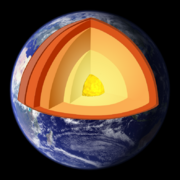Difference between revisions of "Material"
| Line 10: | Line 10: | ||
{{frame1|Sections}} | {{frame1|Sections}} | ||
{{frame1|Twenty most abundant elements in Earth's crust}} | {{frame1|Twenty most abundant elements in Earth's crust}} | ||
| + | {{frame1|Processed materials}} | ||
</div> | </div> | ||
Latest revision as of 17:56, 28 December 2012
|
Air, water and the twenty most abundant elements in the Earth's crust provide almost all the material needed to create the multitude of machines and goods that mankind requires: food, drugs, houses, vehicles, robots, industrial machinery, computers, consumer goods and so on.
Extracting these plentiful elements (and their compounds) to create useful material essentially involves energy (which is also plentiful) and the right processing methods. From a technical point of view there is practically no limit to the volume of material we could extract and make use of, if we so wished, even while minimally disrupting complex and fragile ecosystems. The reserves of raw materials needed to sustain civilisation are simply not going to run out, because the entire Earth's crust The point is that any existing material scarcity actually has little to do with the reserves at our disposal.
Approx figures for the 20 most abundant elements in Earth's crust:
Figures per kilogram of metal
Should state from what ore Cost from mining (can be greatly reduced by biomining in some cases, maybe all) Find good reference. (Temp [5]) Approximate composition of seawater by mass:
Approximate composition of dry atmosphere by volume:
| ||||||||||||||||||||||||||||||||||||||||||||||||||||||||||||||||||||||||||||||
 [print version]
[print version]  [update]
[update]  [site map]
[site map]Detailed tour:  previous page | next page
previous page | next page 






